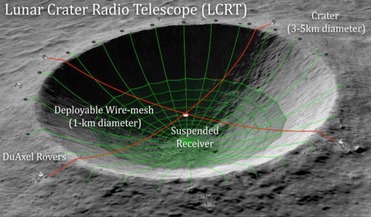 08 April 2020
NASA funds vast radio telescope concept on far side of the Moon
08 April 2020
NASA funds vast radio telescope concept on far side of the Moon
... kilometres in diameter, on the far-side of the Moon into a spherical reflecting dish and use it as a radio telescope. Called the Lunar Crater Radio Telescope (LCRT), the dish would be able to observe the Universe in the 5 –100 metre wavelength band...
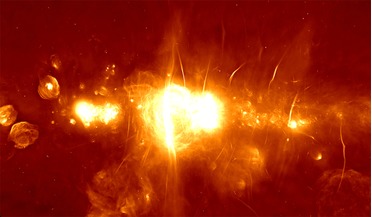 16 July 2018
Science begins with South Africa's super radio telescope
16 July 2018
Science begins with South Africa's super radio telescope
... target: unique, visually striking and full of unexplained phenomena – but also notoriously hard to image using radio telescopes. Although it’s early days with MeerKAT, and a lot remains to be optimised, we decided to go for it – and were stunned...
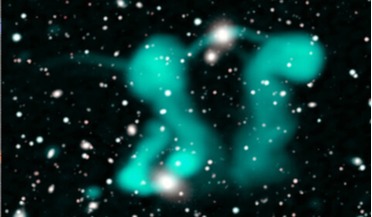 06 August 2021
Surprising new finds as ASKAP surveys the skies
06 August 2021
Surprising new finds as ASKAP surveys the skies
... the total extent of this faint emission," Norris said. The Australian Square Kilometre Array Pathfinder (ASKAP) radio telescope is one of the precursor instruments to the Square Kilometre Array, an international project to build the world’s largest...
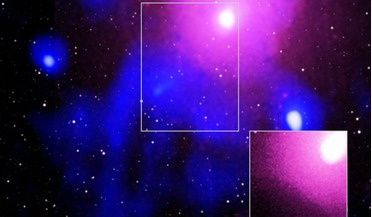 28 February 2020
Record-breaking black hole eruption detected by astronomers
28 February 2020
Record-breaking black hole eruption detected by astronomers
... Array (MWA) in Australia and the Giant Metrewave Radio Telescope (GMRT) in India. "We've seen outbursts in the...observations from XMM-Newton (shown in pink), radio data from the Giant Metrewave Radio Telescope (shown in blue), and infrared data from...
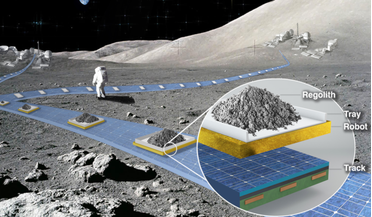 26 February 2021
Lunar levitation track system among new ideas funded by NASA
26 February 2021
Lunar levitation track system among new ideas funded by NASA
... an innovative mission to view the surface of exoplanets using small sats and the Lunar Crater Radio Telescope (LCRT) – a vast radio telescope concept deployed to a crater on the far side of the Moon that was proposed by Saptarshi Bandyopadhyay...
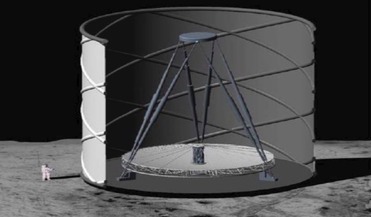 18 November 2020
Astronomers want to revive idea for ‘Ultimately Large Telescope’ on the Moon
18 November 2020
Astronomers want to revive idea for ‘Ultimately Large Telescope’ on the Moon
... has been proposed. Earlier this year NASA awarded a grant for the development of the Lunar Crater Radio Telescope (LCRT) – a wire-mesh receiver one kilometre in diameter that would sit inside a large lunar crater. Long...